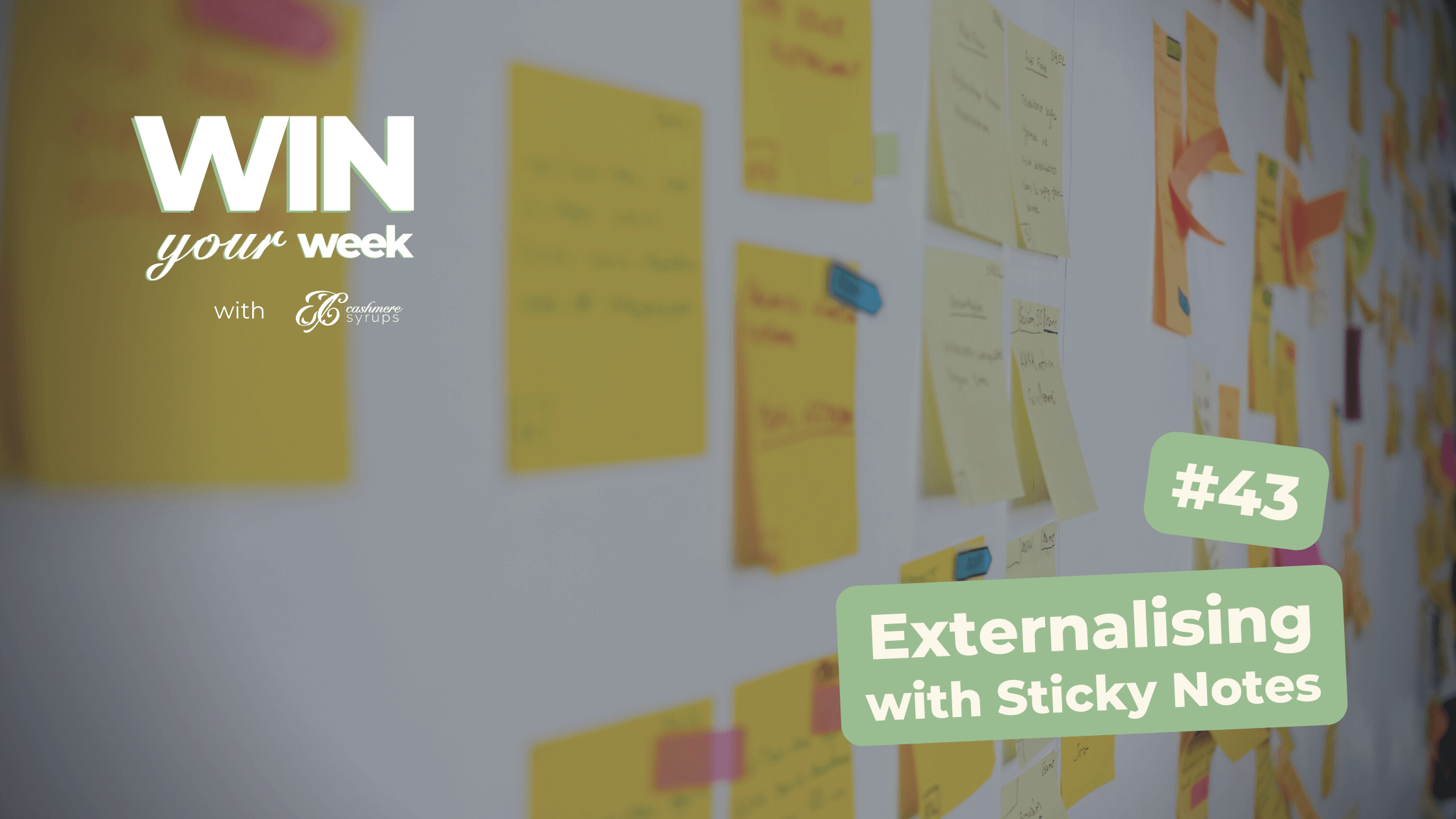Hey there!
Do you ever feel like you have lots of different ideas or to-dos going rattling around in your head? Ever feel like you've invested lots of time on a problem but not being productive? If this sounds like you, read on for some neat tricks that will help to declutter those thoughts!
All about externalisation
Keeping everything in our heads may make us feel like we're "in control" and "keeping busy", but our brains aren’t supposed to keep track of everything.
In fact, our brains are made for having ideas, not keeping them!
Externalisation is the process of transforming our thoughts into an external form. In its simplest form, this involves getting information out of our heads and writing it down.
This may not sound all that revolutionary - anyone who has written a to do list knows that writing down tasks that pop into your head helps clear your mind and makes you feel more organised.
But the real advantage of externalisation occurs when we write down ideas that we are stuck on, as we respond to stimuli in our environment better than thoughts that are rattling around inside of our heads.
If you’ve ever worked with a personal trainer, you may understand this process. When exercising by yourself, it’s very easy to listen to the little voice in your head that’s saying, “this really hurts — you should stop” — even if you’ll get better results by continuing. But with a trainer, you're that much more motivated to continue, because you have an external voice keeping you going.
So - we respond better to stimuli in our environment. How do we apply that to general productivity? Well, there’s a simple method we can use, converting our internal thoughts into an external form our minds can use more effectively.
Externalisation takes advantage of our perceptual abilities in a very intelligent way. By converting our internal thought processes into an external form, externalisation gives us the ability to re-input information into our brains via a different channel, which gives us access to additional cognitive resources we can use to process the same information in a different way.
So where do sticky notes come in?
There are two primary ways to externalise your thoughts: writing and speaking. Writing is the best way to capture ideas, plans, and tasks. Not only does writing give you the ability to store information in a form you can reference later, it gives your mind the opportunity to examine what you know from a different angle.
Challenges and issues that seem insurmountable while they’re bouncing around in your frontal lobe can often be solved surprisingly quickly after they’re put on paper.
Sticky notes have many qualities that make them good tools for externalisation. They’re cheap, so they can be used and discarded without much cost. They are small and consistent in shape, making them perfect for holding a single discrete thought. And their reusable adhesive backing means they can be repositioned to show connections between different ideas.
Externalisation in action
When a thought pops into your head whether it's the reminder that your best friend's birthday is coming up next week or the next big idea for that project at work, write it down on a sticky note. Place the sticky note somewhere you will see it. This will act as a trigger which you can then process (e.g. text your friend to make plans for their birthday or elaborate on that idea with more points which eventually become a fully formed plan).
Over to you...
However, you do it, the more you externalise, the clearer your thoughts will become, and the faster you’ll make progress toward your goals. We hope you give this simple practice a go - now go out and win your week!









